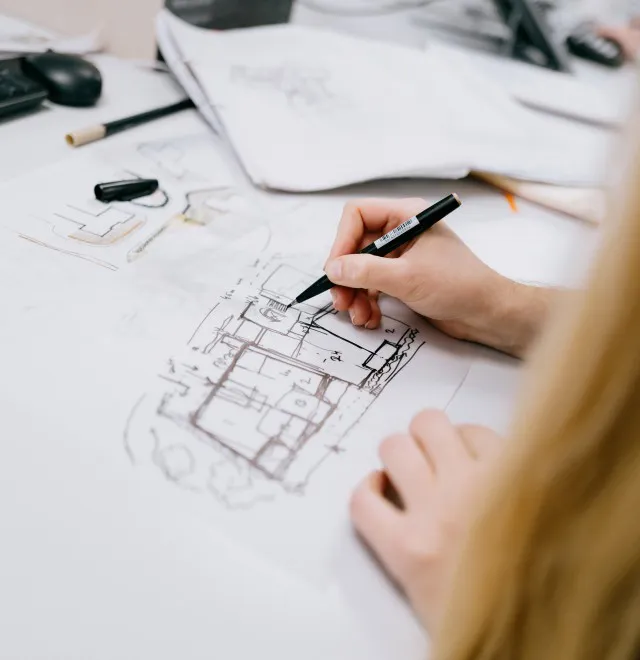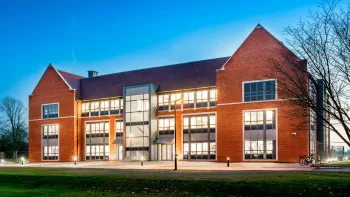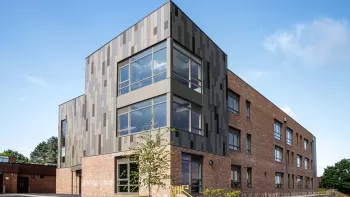Most of our work is located in the south of England, mainly in Sussex, Surrey and Kent, where we have strong working relationships with related professions, consultants and contractors.
Guided by our principles of creating social value and promoting sustainability, we work to connect people, place and the planet. Our project values range in value from £250,000 to £25 million.
Our services
Our design team is fully conversant with current legislation, regulation and innovation so that all our projects meet the demands of the brief and maximise the potential of any site to deliver you beautiful and technically sound buildings.
We provide a full RIBA architectural service to meet your needs, from project inception to completion, including:
- Masterplanning
- Feasibility Studies
- Space Audits
- Brief Development Site Appraisals
- Concept Design
- Detailed Building Design
- Visualisations
- Planning Applications
- Building Regulations Applications
- Technical Design
- NBS Specifications
- Contract Administration
- Building Procurement Advice
- Sustainability Guidance
- BIM Lead and Clash Detection

RIBA chartered practice
As a RIBA-accredited Architectural Practice, we’re governed to work in accordance with RIBA professional code of conduct. We’re certified, too, to operate an ISO 9001 Quality Management System and an ISO 14001 Environmental Management System.
RIBA Plan of Work
The RIBA Plan of Work helps you and us by providing of a simple and clear and flexible framework for the processes that your project will go through.
It organises the process of briefing, designing, construction, handover and operation of the building into eight stages and explains the stage outcomes, core tasks and information exchanges required at each stage.
We use the Plan of Work as it has become the industry standard and so is understood by everyone involved. It also reflects today’s requirements for Sustainability and Building Information Modelling (BIM).
Obviously, there are significant differences of scale and complexity between, say, designing a new school facility or a large residential development. The Plan of Work has been conceived to be adaptable to all building typologies, whether you are taking the traditional procurement route or the design and build route.
General Guide to the RIBA Plan of Work
Below is a general guide to the stages, although it should be noted that some aspects might be adjusted depending on the nature of your project, programme and procurement route.
Stage 0 is generally a client-centric stage but might require architectural input. It’s essentially a strategic overview as to the best way of achieving the required goals and will include the development of a Business Case, Project Budget and evaluation of the Project Risks. Some high -evel spatial evaluation of the suitability of a site or building might be needed to provide guidance for your budget and potential project risks.
The preparation of the brief is a key stage in analysing your requirements so that it can be used for the development of the Concept Design in Stage 2. As well as outlining the spatial requirements and adjacencies, it might also include aspirations for the technical performance of the development as well as sustainability targets. There might be some feasibility studies undertaken at this stage to understand the opportunities and constraints offered by your site and to test these at a high level against the outline brief to highlight pinch points and risks and to check against the outline budget.
This will also be the stage when the project programme will start to be fleshed out, together with the appointment of other consultants and surveys that will be needed going forwards.
Stage 2 is when the information taken from the Brief, Site Information, Spatial and Adjacency Requirements are used to develop your concept designs. Specialist consultants will also be feeding into the design proposals and these then need to be clearly presented and explained to you as client and your stake holders so that feedback can be can be taken on board and the design progressed. While the design is still fluid, it is easy to make changes to create the design that balances the demands of the brief.
At this stage, issues relating to Inclusive design, Health & Safety, Planning & Building Regulations compliance and Sustainability will need to be considered too.
At the end of Stage 2 ,the overall parameters and concept for the design should be fixed and signed off. Through Stage the user requirements will be firmed up in more detail, together with the preliminary structural and services designs to ensure these can be incorporated. Also, at this stage further surveys might well be required (accoustics, ecology, drainage etc) to inform the design, as well as form part of the planning application which is generally submitted now at the end of Stage 3.
With further refinement and detail added to the design and outline specifications produced, the proposals will once again be costed to provide comfort that the proposals being submitted for planning approval are within the budget.
At stage the proposed procurement route would be established, and the programme firmed up. Very often with tight programmes, if there is sufficient comfort that planning approval will be granted, clients often progress into Stage 4 at risk.
This is also very often the stage that the proposals will be tendered as a two-stage Design and Building procurement route, handing over the responsibility for the Stage 4 design development to a contractor under a Pre-Constructor Services Agreement.
Stage 4 is very much about drilling down into the nitty gritty of the design to ensure buildability and compliance with the Building Regulations, fine-tuning client requirements and specifications, and incorporating specialist supplier and subcontractor details within the design. Clash detection would be undertaken to eliminate potential conflicts between the building
Stage 5 starts once your contractor is appointed, the construction information issue and the pre-start planning conditions approved. Site logistics need to be agreed with the client together with Health & Safety procedures so the contractor can progress the construction works to an agreed programme.
There’s still likely to be a continued involvement for the design team to deal with issues that arise during the construction period which could not be resolved during Stage 4, such as involving the opening up of parts of an existing building or incorporating specialist supplier details.
With a traditional procurement route, the architect would undertake the Contract Administration. In a Design and Build route, this could have been novated across to your contractor at Stage 4 or the architect may remain client-side as a design advisor.
The issuing of a Practical Completion certificate would mark the completion of the main construction phase, the commissioning and certification of building systems, the final sign-off of Building Regulations approval, the handover of the operation and maintenance manuals and the training of the building user in the various systems.
Over the following year, the building should be monitored and any teething problems assessed and dealt with by the main contractor. At the end of the year, any remaining defects would be rectified. This would release any outstanding retention monies and following the agreement of the final account, the Final Certificate would be issued.
Stage 7 is not currently applicable for many buildings but will be a growing requirement for post-occupancy evaluation. This will take data from for the actual performance of the building to be compared to the design expectations.
For further information on the RIBA Plan of Work, please click here.

Expertise
Learn about our approach and expertise for these sectors:



